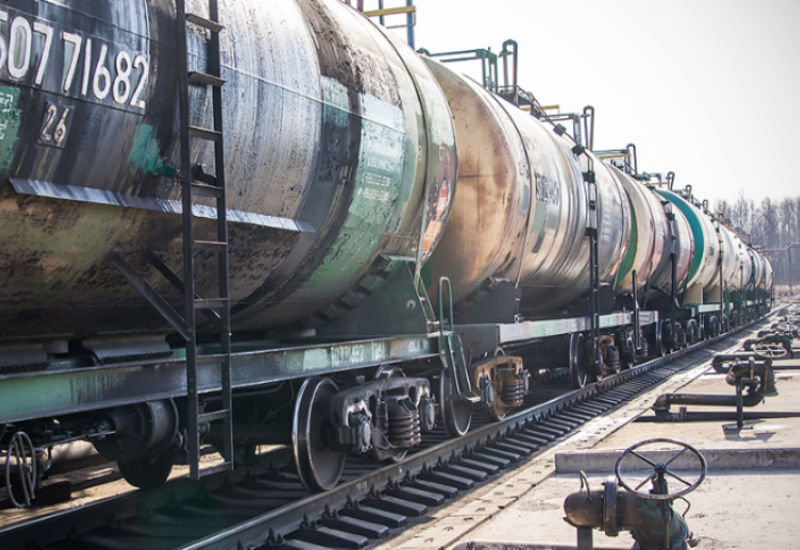|
|
TODAY.AZ / Business
Ruble/rial trade risky but inevitable
01 May 2015 [10:09] - TODAY.AZ

By Umid Niayesh, Temkin Jafarov
International sanctions imposed on Iran due to its disputed nuclear program has forced the country towards bartering goods with oil and using national currencies instead of the US dollar or Euro in trade with foreign countries.
The Islamic Republic recently launched ruble/rial trade with Russia. Gholam Reza Panahi, the deputy governor for currency affairs of Bank Melli of Iran (BMI) said on April 25 that a mechanism that enables Iranian exporters to transfer payments in rubles from their Russian clients to Iran through the Moscow-based Mir Business Bank has been established.
It is while Iran and the P5+1 (the US, UK, France, Russia, China, and Germany) reached a nuclear framework agreement on April 2 that raised hopes for achieving a comprehensive nuclear deal by June 30 and lifting of economic sanctions on Iran, including the restrictive measures against the country’s banking system.
The possible agreement would provide Tehran with access to almost $100 billion of its blocked assets abroad and connection to international money transportation system, Swift.
The Russian ruble has experienced a sharp fall since sanctions were put in place over the Ukraine crisis. Iran’s rial however is more stable now, after President Hassan Rouhani took the office in August 2013, but still experiences fluctuations.
Fluctuations of ruble and rial make up the main risk factor in replacing the national currencies with the international currencies in Iran-Russia mutual trade, Pedram Soltani, vice president of Iran Chamber of Commerce, Industries and Mines believes. However he underlined the importance of moving towards the use of national currencies in mutual transactions with high volume.
“I believe that bilateral monetary agreements between the countries, especially those which have high economic and commercial exchanges should be formed gradually,” Soltani told Trend April 30.
“However the instability of the national currency of the countries is the main risk of such cooperation, but can be managed by risk reducing mechanisms through forming the foreign exchange market,” he added.
He further said that developing countries should gradually reduce their reliance on limited number of international currencies to put an end to the monopoly of certain countries in the world financial system.
Soltani also touched upon the future of the Iran-west trade in post-sanctions period, saying there is no doubt that trade and investment activities between Iran and the West will experience growth and prosperity again.
While responding a question about the Iran-Russia trade after the sanctions are lifted he said that it will be affected negatively in short-term, but in mid-term Tehran-Moscow trade would be boosted.
Removing the sanction will lead to growth of Iran’s economy and overcoming the current economic recession, he said, adding as a result Iran’s exportable products to Russia and the country’s demands for imports from Moscow will both increase.
Iran-Russia trade turnover was about $2.3 billion in pre-sanctions period. The Islamic Republic imported $1.76 billion worth of goods from Moscow in 2011, meanwhile the country’s exports to Russia accounted for about $500 million.
According to the Iranian Customs Administration Tehran exported $296 million worth of none-oil goods to Russia in last fiscal year (ended on March 20). Iran ’s imports from Russia stood at $667 million in the same period.
URL: http://www.today.az/news/business/140346.html
 Print version
Print version
Connect with us. Get latest news and updates.
See Also
- 16 December 2025 [14:12]
MUSIAD Azerbaijan members invest ?93 mln in economy this year - 15 December 2025 [15:33]
Azerbaijan approves National Standardization Program for 2026–2028 - 15 December 2025 [14:36]
Largest battery storage centers in the CIS to be launched in Azerbaijan - 15 December 2025 [13:22]
Chinese partners explore opportunities to expand imports of Azerbaijani products - 15 December 2025 [12:51]
Azercell successfully renews international quality management certification - 14 December 2025 [10:00]
ANAMA signs new procurement contracts with foreign companies - 13 December 2025 [13:45]
Baku and Bishkek explore expanded cooperation across key sectors - 13 December 2025 [10:00]
Azerbaijan, US assess cooperation opportunities in energy sector - 13 December 2025 [08:30]
Pipeline integrity in focus: New approaches applied across TANAP and STAR projects [EXCLUSIVE] - 12 December 2025 [11:38]
Energy Minister addresses GWU forum honoring Azerbaijan's National Leader, Heydar Aliyev
Most Popular
 Hornet's nest has been stirred up: how topic of Western Azerbaijan scared revanchists
Hornet's nest has been stirred up: how topic of Western Azerbaijan scared revanchists
 Azerbaijani oil scares demagogues in Yerevan: where is common sense?
Azerbaijani oil scares demagogues in Yerevan: where is common sense?
 U.S., S. Korea, other partners sign 'Pax Silica' declaration amid AI race with China
U.S., S. Korea, other partners sign 'Pax Silica' declaration amid AI race with China
 Pashinyan once again spoke out against Garegin
Pashinyan once again spoke out against Garegin
 Ukraine to disband four international legion units by end of 2025
Ukraine to disband four international legion units by end of 2025
 SpaceX insider share sale sets $800 billion valuation amid possible IPO, letter shows
SpaceX insider share sale sets $800 billion valuation amid possible IPO, letter shows
 South Korea to enforce new AI regulations amid industry concerns
South Korea to enforce new AI regulations amid industry concerns
